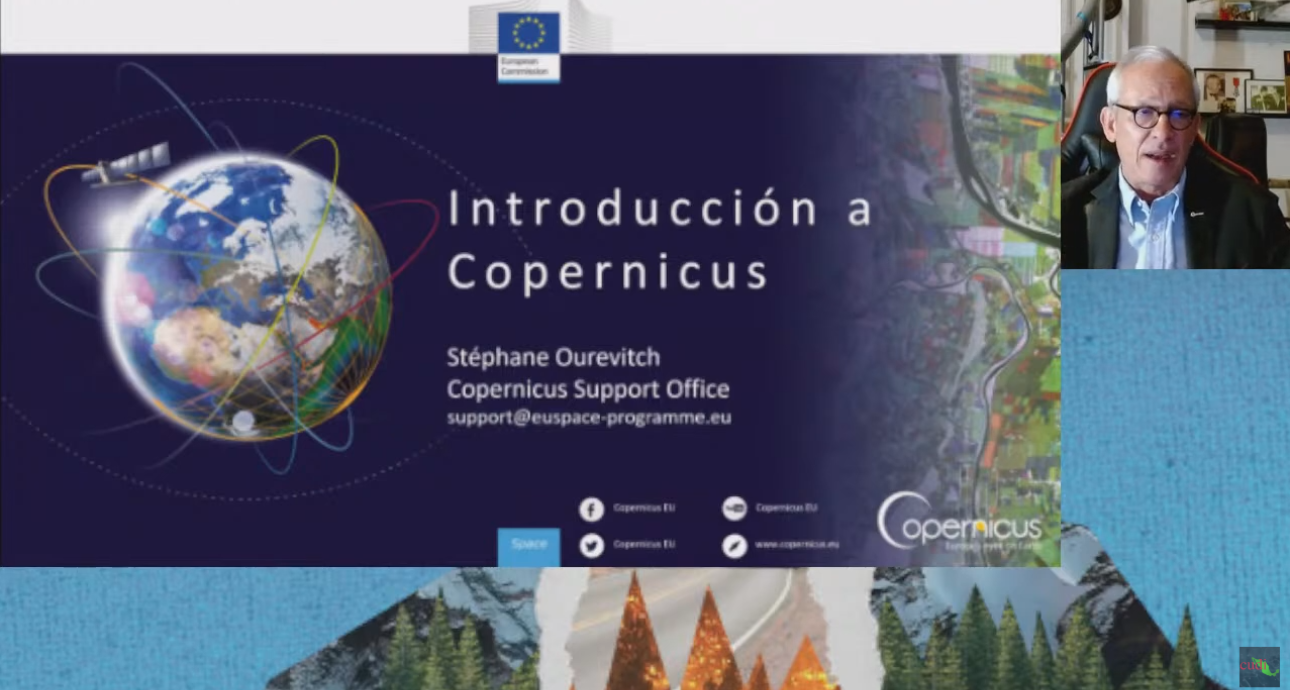News
Copernicus and its benefits were presented to the Mexican scientific community

The webinar "From the Sky to the Earth" was held on February 21 with the aim of presenting to the Mexican educational, scientific and research communitiesthe characteristics of the European Union's Earth Observation Programme, Copernicus, its benefits at the national level for solving or mitigating the effects of various problems related to climate change and disasters, and the experience of the Copernicus Academy in the region.
The event was organized by the National Research and Education Network from Mexico, CUDI, in collaboration with RedCLARA, and was attended by Moises Torres Martinez, General Director of CUDI, Luis Eliecer Cadenas, Executive Director of RedCLARA, Laura Castellana, Coordinator of Academic Projects of the regional network, and Stephane Ourevitch, Supervisor and Community Manager of Copernicus, who was in charge of presenting the relevant project.
In his presentation, Ourevitch gave an overview of what Copernicus is and the benefits it already brings and can continue to bring to the Latin American and Caribbean region. "Copernicus is the European Union's Earth Observation Programme; it monitors the Earth, its environment and its ecosystems, helping us to prepare for crises, security risks and natural or man-made disasters. Moreover, it has a comprehensive, free and open data policy, which transforms it into an economic development tool and a driver of the digital economy."
Ourevitch also highlighted the functions of each of Copernicus "Sentinel" satellites and how they enable the tracking of the land surface, water bodies and vegetation, allowing to obtain monitoring indices, such as vegetation indices (NDVI) or water and humidity indices (NDWI). "The Copernicus services provideopen data that allow seasonal forecasts and climate projections, which can be used not only by academia, but also by businesses and rural producers. It also helps in disasters management, early warnings and risk/vulnerability/hazard assessments, and in mapping the impact of human activities on the Earth," he explained.
According to him one of the main objectives for Copernicus is to create social, economic and environmental impact addressing the challenges of the region challenges and promoting new applications, local solutions, ventures and technological developments adapted to the region.
In his participation, the Executive Director of RedCLARA, Luis Eliécer Cadenas, emphasized the importance of Copernicus for the region and how, through BELLA ii, the regional network is working to take advantage of the benefits provided by the initiative. "RedCLARA is working on the second phase of BELLA (BELLA II) in which we are focused on building a digital ecosystem, understood not only as connectivity, but as the set of technical components and actors that, interacting with that platform, will be able to generate value and produce relevant results and solutions for the entire region. Copernicus is a central element in this strategy. The amount of data it provides us with and the countless possibilities of application are very important for us to achieve our objectives in the region," he said.
The local "arm" to carry these possibilities forward is the Copernicus Academy in Latin America and the Caribbean, which, driven by RedCLARA and its member NRENs, seeks to enhance capacity building and knowledge management in Earth observation. "The strategy of the Academy was developed in conjunction with the national networks, and has three pillars: promote the use of data and the dissemination of knowledge, create a regional commitment to capacity building and promote the development of training products," explained the Coordinator of Academic Projects of RedCLARA, Laura Castellana. According to the expert, the main objective is that the Academy becomes a large network that enhances the pillars, but also the collaboration between the different actors of the digital ecosystem that is being formed in the region.
The recording session of the webinar "From Heaven to Earth" is available in RedCUDI's YouTube channel: https://www.youtube.com/live/0YuWLgdkXxk?si=2CQ_mOSIuNbe06EH




